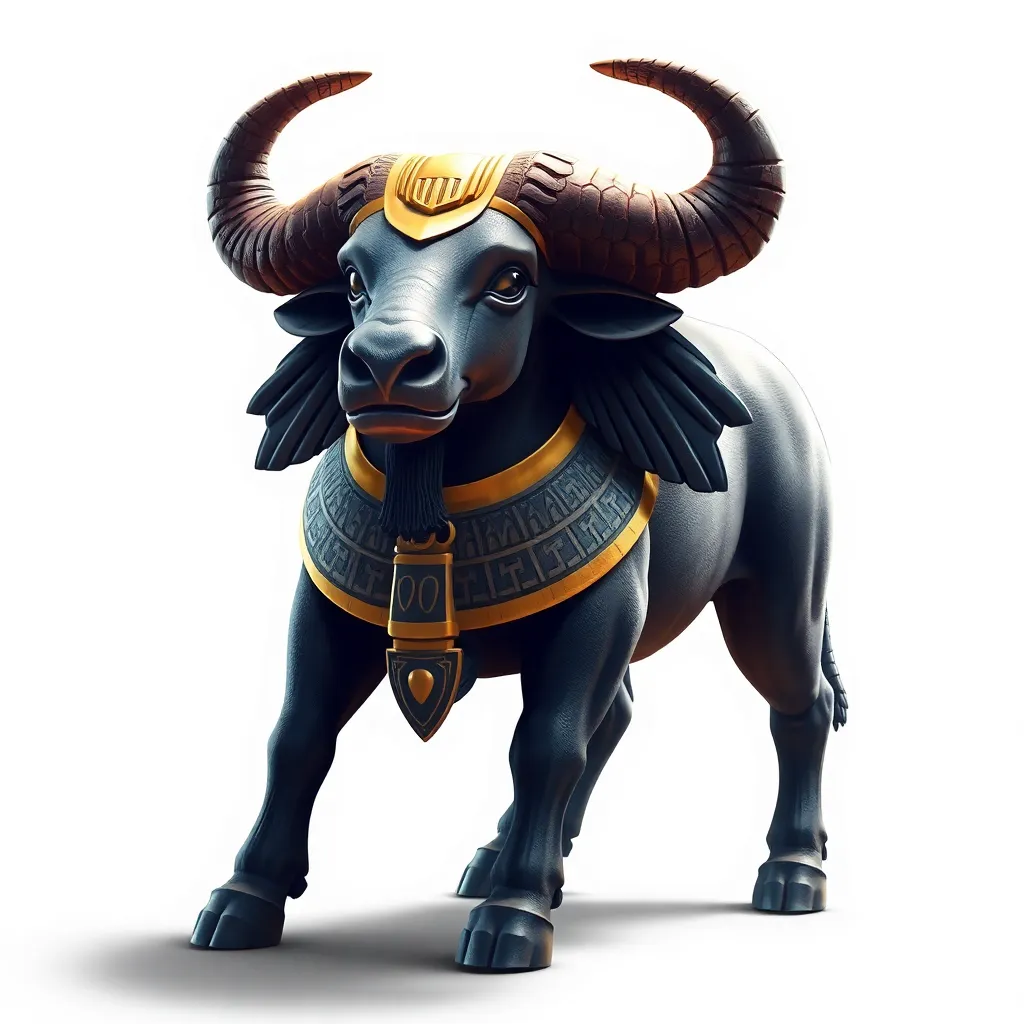The Apis Bull: The Symbol of Strength and Protection
I. Introduction
The Apis Bull, a sacred figure in ancient Egyptian mythology, represents not only physical strength but also divine protection. Revered as a manifestation of the god Ptah, the Apis Bull held profound cultural significance in the lives of the ancient Egyptians. Its presence was deeply woven into the fabric of their religion, agriculture, and societal norms, serving multiple roles that reinforced its status as a powerful symbol. This article aims to explore the historical context, symbolism, worship practices, artistic representations, and the enduring legacy of the Apis Bull in both ancient and modern contexts.
II. Historical Context
The origins of the Apis Bull can be traced back to the early dynastic period of ancient Egypt, where it was first recognized as a representation of fertility, strength, and agricultural prosperity. The bull was believed to embody the soul of Osiris, the god of the afterlife, thus linking it closely with themes of death and resurrection.
In Egyptian mythology, the Apis Bull was associated with the god Ptah, the creator god and patron of craftsmen and architects. The Apis Bull was not merely a divine creature; it was a living embodiment of the god’s presence on earth, revered in temples and during religious ceremonies. Its role extended beyond mere symbolism; it was integral to the agricultural cycle, representing the fertility of the land and the prosperity of the people.
III. Symbolism of the Apis Bull
The Apis Bull held a multitude of meanings within ancient Egyptian society:
- Strength and Power: The bull was a symbol of physical strength, representing the might of the pharaohs and the power of the gods.
- Protection and Guardianship: The Apis Bull was seen as a guardian figure, protecting the land and its people from malevolent forces.
- Afterlife and Divine Favor: As a symbol associated with Osiris, it represented the cycle of life, death, and rebirth, embodying divine favor and support in the afterlife.
IV. The Worship of the Apis Bull
The worship of the Apis Bull was profound, with various religious practices and rituals dedicated to this sacred creature. Temples, most notably the Serapeum in Saqqara, were constructed to honor the Apis Bull, where it was kept and revered as a living deity.
Rituals involved:
- Feeding and caring for the bull, ensuring it was treated with the utmost reverence.
- Festivals celebrating the bull’s life and its significance in the agricultural calendar.
- Funerary practices that included the burial of deceased Apis Bulls in grand ceremonies, reflecting their importance in the afterlife.
V. Artistic Representations
Artistic depictions of the Apis Bull can be found throughout ancient Egyptian art and sculpture. These representations often highlight the bull’s strength and divine attributes, showcasing its significance in religious iconography.
Common attributes associated with the Apis Bull in art include:
- Distinctive markings, such as a white triangle on its forehead.
- Depictions alongside gods, particularly Ptah and Osiris, emphasizing its divine connections.
- Use in ceremonial contexts, often portrayed in temple reliefs and sculptures.
The influence of the Apis Bull on later artistic traditions is notable, as it inspired various representations in Greco-Roman art and beyond, serving as a symbol of strength and protection.
VI. The Legacy of the Apis Bull
The legacy of the Apis Bull extends beyond ancient Egypt and continues to resonate in modern culture. Its symbolism of strength, protection, and fertility is echoed in various contemporary contexts.
In modern times, the Apis Bull has been referenced in:
- Religious practices, where some groups draw inspiration from ancient symbols.
- Art and literature, where its imagery serves as a metaphor for power and divine favor.
- Influence on other cultures, with the Apis Bull inspiring symbols of strength across different civilizations.
VII. The Apis Bull in Modern Symbolism
Today, the Apis Bull has found its way into branding and logos, symbolizing strength and reliability. Companies often utilize bull imagery to convey power and stability, tapping into the enduring legacy of this ancient symbol.
Additionally, the Apis Bull appears in various forms of literature and popular culture, frequently representing themes of strength, protection, and guardianship. Its broader interpretations in today’s society often reflect our continued fascination with ancient symbols and their meanings.
VIII. Conclusion
In conclusion, the Apis Bull stands as a powerful symbol of strength and protection in ancient Egyptian mythology. Its significance transcends time, leaving a lasting legacy that continues to inspire modern interpretations of power and divinity. As we reflect on the enduring relevance of the Apis Bull, we are encouraged to explore further the ancient symbols that still resonate in contemporary contexts, reminding us of the rich tapestry of human belief and cultural heritage.




